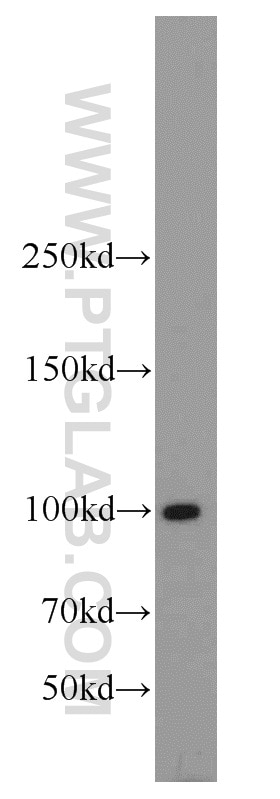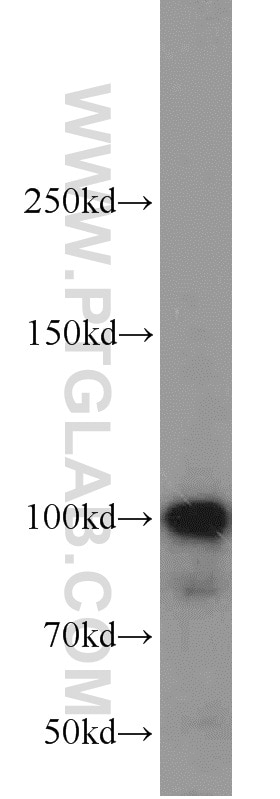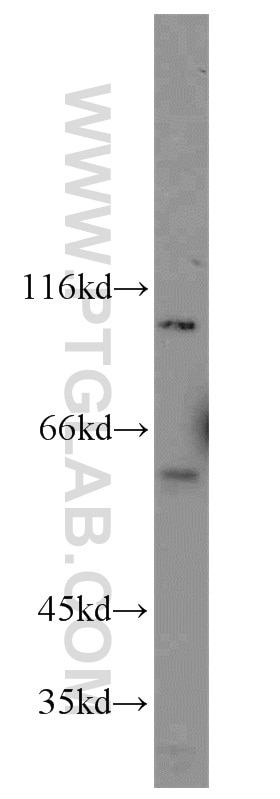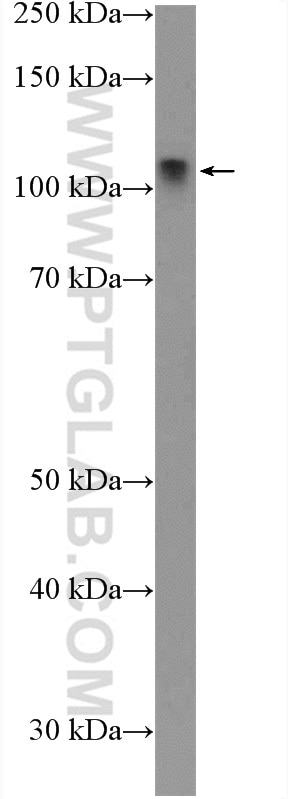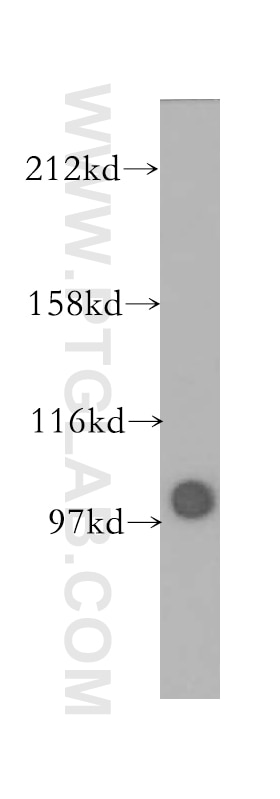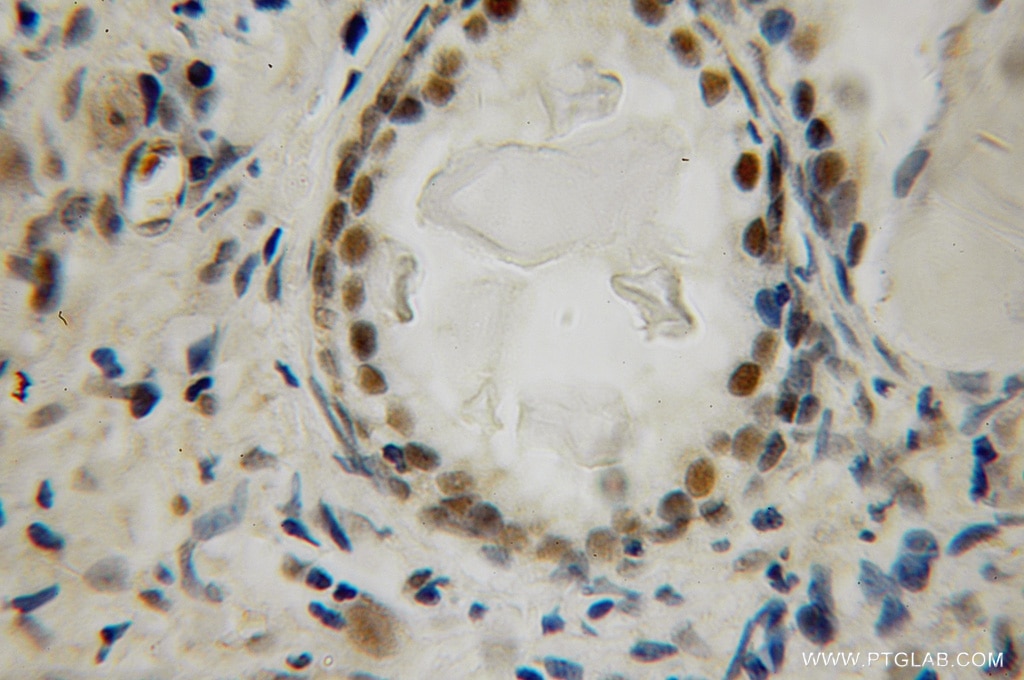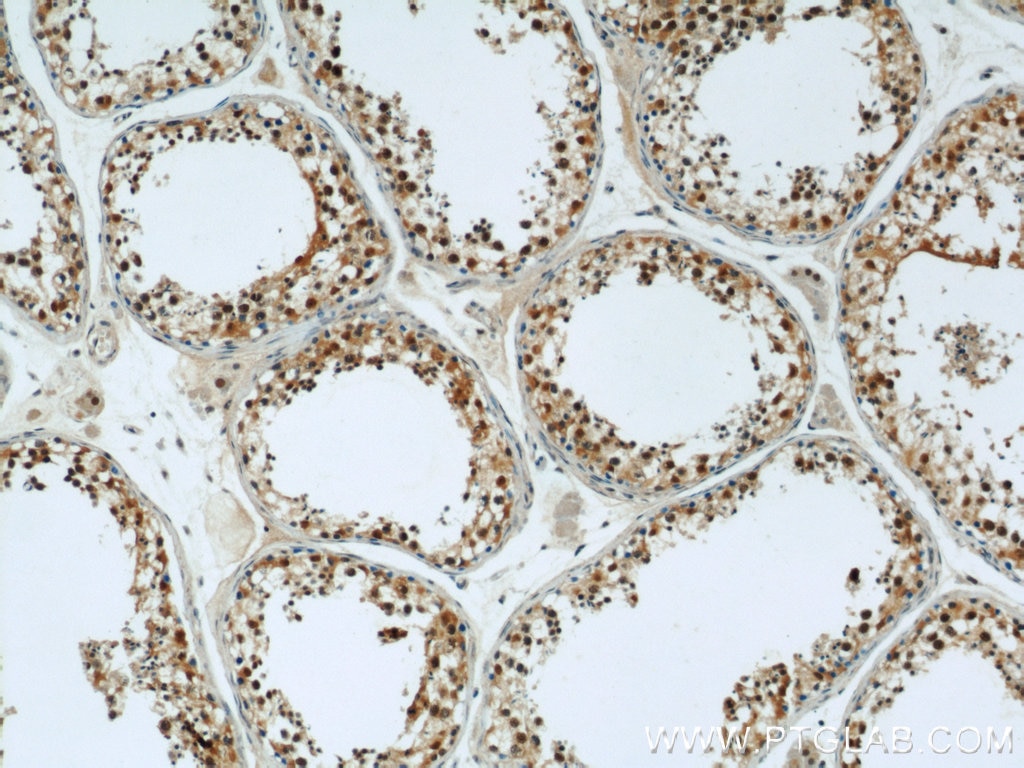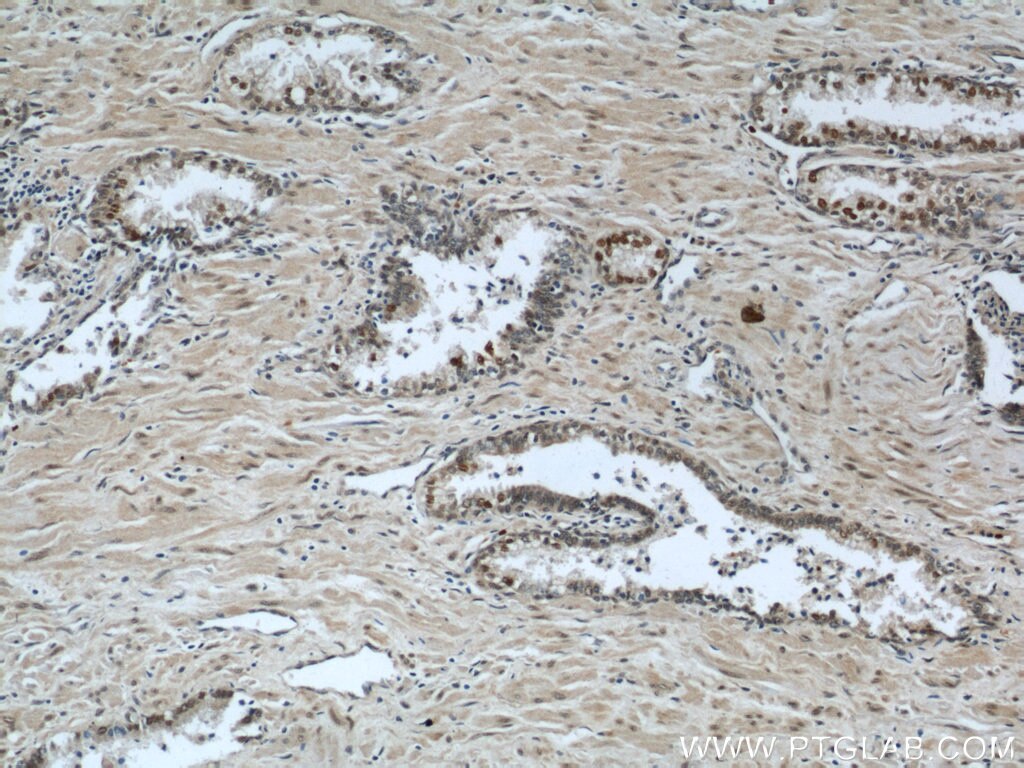- Phare
- Validé par KD/KO
Anticorps Polyclonal de lapin anti-LIG4
LIG4 Polyclonal Antibody for WB, IHC, ELISA
Hôte / Isotype
Lapin / IgG
Réactivité testée
Humain, rat, souris
Applications
WB, IHC, IF, ELISA
Conjugaison
Non conjugué
N° de cat : 12695-1-AP
Synonymes
Galerie de données de validation
Applications testées
| Résultats positifs en WB | tissu testiculaire de souris, cellules HeLa, cellules HepG2, tissu hépatique de souris, tissu testiculaire de rat |
| Résultats positifs en IHC | tissu de cancer de la prostate humain, tissu testiculaire humain il est suggéré de démasquer l'antigène avec un tampon de TE buffer pH 9.0; (*) À défaut, 'le démasquage de l'antigène peut être 'effectué avec un tampon citrate pH 6,0. |
Dilution recommandée
| Application | Dilution |
|---|---|
| Western Blot (WB) | WB : 1:500-1:1000 |
| Immunohistochimie (IHC) | IHC : 1:20-1:200 |
| It is recommended that this reagent should be titrated in each testing system to obtain optimal results. | |
| Sample-dependent, check data in validation data gallery | |
Applications publiées
| KD/KO | See 1 publications below |
| WB | See 25 publications below |
| IF | See 3 publications below |
Informations sur le produit
12695-1-AP cible LIG4 dans les applications de WB, IHC, IF, ELISA et montre une réactivité avec des échantillons Humain, rat, souris
| Réactivité | Humain, rat, souris |
| Réactivité citée | rat, Humain, souris |
| Hôte / Isotype | Lapin / IgG |
| Clonalité | Polyclonal |
| Type | Anticorps |
| Immunogène | LIG4 Protéine recombinante Ag3385 |
| Nom complet | ligase IV, DNA, ATP-dependent |
| Masse moléculaire calculée | 911 aa, 104 kDa |
| Poids moléculaire observé | 100-104 kDa |
| Numéro d’acquisition GenBank | BC037491 |
| Symbole du gène | LIG4 |
| Identification du gène (NCBI) | 3981 |
| Conjugaison | Non conjugué |
| Forme | Liquide |
| Méthode de purification | Purification par affinité contre l'antigène |
| Tampon de stockage | PBS with 0.02% sodium azide and 50% glycerol |
| Conditions de stockage | Stocker à -20°C. Stable pendant un an après l'expédition. L'aliquotage n'est pas nécessaire pour le stockage à -20oC Les 20ul contiennent 0,1% de BSA. |
Informations générales
Two major pathways, homologous recombination (HR) and nonhomologous end joining (NHEJ), counteract one of themost toxic lesions, the DSB. The core protein complex mediating NHEJ in mammals includes DNA ligase IV (Lig4). Lig4 belongs to an ATP-dependent DNA ligase family, and joins single-strand brdownloadeaks in a double-stranded polydeoxynucleotide in an ATP-dependent reaction. The complex Lig4-XRCC4 is responsible for the NHEJ ligation step, and XRCC4 enhances the joining activity of Lig4.
Protocole
| Product Specific Protocols | |
|---|---|
| WB protocol for LIG4 antibody 12695-1-AP | Download protocol |
| IHC protocol for LIG4 antibody 12695-1-AP | Download protocol |
| Standard Protocols | |
|---|---|
| Click here to view our Standard Protocols |
Publications
| Species | Application | Title |
|---|---|---|
Cell Host Microbe Cellular DNA ligase I is recruited to cytoplasmic vaccinia virus factories and masks the role of the vaccinia ligase in viral DNA replication.
| ||
Nat Commun Reciprocal regulation of RIG-I and XRCC4 connects DNA repair with RIG-I immune signaling. | ||
J Allergy Clin Immunol XRCC4 deficiency in human subjects causes a marked neurological phenotype but no overt immunodeficiency. | ||
Nat Commun Rap1 regulates hematopoietic stem cell survival and affects oncogenesis and response to chemotherapy. | ||
Nat Commun Interactome analysis identifies a new paralogue of XRCC4 in non-homologous end joining DNA repair pathway. | ||
Cancer Res Inhibition of ATM Induces Hypersensitivity to Proton Irradiation by Upregulating Toxic End Joining. |
